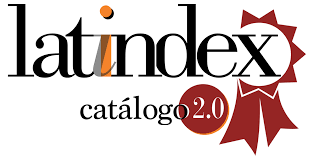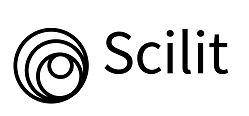Panic disorder: psychopathological and phenomenological features
DOI:
https://doi.org/10.25118/2763-9037.2013.v3.317Keywords:
anxiety, panic, disorder, psychopatholog, psychopathologyAbstract
Panic disorder is an anxiety disorder characterized by the presence of three clinical syndromes: the panic attack, the anticipatory anxiety and or phobic avoidance. In this review article the author describes the psychopathology and phenomenology of this important anxiety disorder. Laboratory studies of panic attacks are also mentioned
Downloads
Metrics
References
• 1.American Psychiatric Association. Diagnostic and Statistic Manual of Mental disorders.3rd edition. Washington, DC, 1980.
• 2. American Psychiatric Association. Diagnostic and Statistic Manual of Mental disorders.3rd edition-revised. Washington, DC, 1987.
• 3. American Psychiatric Association. Manual Diagnóstico e Estatístico de Transtornos Mentais. DSM-IVquarta edição. Porto Alegre: Artes Médicas, 1995.
• 4. American Psychiatric Association. DSM-IV-TR: manual diagnóstico e estatístico de transtornos mentais. 4a Ed. Porto Alegre: Editora Artmed; 2002.
• 5. Classificação de Transtornos Mentais e de Comportamento da CID-10. Porto Alegre: Artes Médicas, 1992.
• 6. Faravelli C, Paionni A. Panic disorder: clinical course, morbidity and comorbidity. In: Anxiety Disorders: An Introduction to Clinical Management and Research. Eric JL Griez, Carlo Faravelli , David Nutt , Joseph Zohar. New York: John Wiley & Sons, Ltd, pp 53-79, 2001.
• 7. Gorman JM, Liebowitz MR, Fyer AJ, Stein J. A neuroanatomical hypothesis for panic disorder. Am J Psychiatry 1989; 146 (2): 148-161.
• 8. Ballenger JC. Panic disorder in the medical setting. J Clin Psychiatry 1997; 58(suppl 2): 13-17.
• 9. Katon W. Panic disorder and somatization. Am J Medicine 1984; 77: 101-106.
• 10. American Psychiatric Association. Practice guideline for the treatment of patients with panic disorder. Washington, DC, 1998.
• 11. Mellman TA, Udhe TW. Electroencephalographic sleep in panic disorder. Arch Gen Psychiatry 1989; 46: 178-184.
• 12. Klein DF, Gorman JM. A model of panic and agoraphobia development. Acta Psychiatr Scand 1987; 76 (335 suppl): 87-95.
• 13. Andrews G, Slade T. Agoraphobia without a history of panic disorder may be part of the panic disorder syndrome. J Nerv Ment Dis 2002; 190: 624-630.
• 14. Klein DF. Anxiety reconceptualised. In: Klein DF, Raskin J. Anxiety: New Research and changing concepts. New York: Raven Press, 1981.
• 15. Noyes R, Crowe RR, Harris EL, et al. Relationship between panic disorder and agoraphobia: a family study. Arch Gen Psychiatry 1986; 43: 227-232.
• 16. Klein DF, Klein HM. The status of panic disorder. Current Opinion in Psychiatry 1988; 1: 177-183.
• 17. Shioiri T, Someya T, Murashita J, Takahashi S. The symptom structure of panic disorder: a trial using factor and cluster analysis. Acta Psychiatr Scand 1996; 93: 80-86.
• 18. Margraf J, Taylor B, Ehlers A, Roth WT, Agras WS. Panic attacks in the natural environment. J Nerv Mental Disease 1987; 175: 558-565.
• 19. De Beurs E, Garsses B, Buikhuisen M, Lange A, Van Balkom A, Dyck R. Continuous monitoring of panic. Acta Psychiatr Scand 1994; 90: 38-45.
• 20. Briggs AC, Stretch DD, Brandon S. Subtyping of panic disorder by symptom profile. Brit J Psychiatry 1993; 163:201-209.
• 21. Valença AM, Nardi AE, Nascimento I, Mezzasalma MA, Lopes FL, Zin WA. Ataques de pânico provocados pelo dióxido de carbono: estudo clínico-fenomenológico. Rev Bras Psiquiatr 2001; 23 (1): 15-20.
• 22.Biber B, Alkin T. Panic disorder subtypes: differential responses to CO2 challenge. Am J Psychiatry 1999; 15 6(5): 739-744.
• 23. Bandelow B, Amering M, Benkert O, et al. Cardio--respiratory and other symptom clusters in panic disorder. Anxiety 1996; 2: 99-101.
• 24. Freire RC, Nardi AE. Panic disorder and the respiratory system: clinical subtype and challenge tests. Rev Bras Psiquiatr. 2012; 34(Supl1):S32-S52.
Downloads
Published
How to Cite
Issue
Section
License

This work is licensed under a Creative Commons Attribution-NonCommercial 4.0 International License.
Debates em Psiquiatria allows the author (s) to keep their copyrights unrestricted. Allows the author (s) to retain their publication rights without restriction. Authors should ensure that the article is an original work without fabrication, fraud or plagiarism; does not infringe any copyright or right of ownership of any third party. Authors should also ensure that each one complies with the authorship requirements as recommended by the ICMJE and understand that if the article or part of it is flawed or fraudulent, each author shares responsibility.
Attribution-NonCommercial 4.0 International (CC BY-NC 4.0) - Debates em Psiquiatria is governed by the licencse CC-By-NC
You are free to:
- Share — copy and redistribute the material in any medium or format
- Adapt — remix, transform, and build upon the material
The licensor cannot revoke these freedoms as long as you follow the license terms. Under the following terms:
- Attribution — You must give appropriate credit, provide a link to the license, and indicate if changes were made. You may do so in any reasonable manner, but not in any way that suggests the licensor endorses you or your use.
- NonCommercial — You may not use the material for commercial purposes.
No additional restrictions — You may not apply legal terms or technological measures that legally restrict others from doing anything the license permits.






























